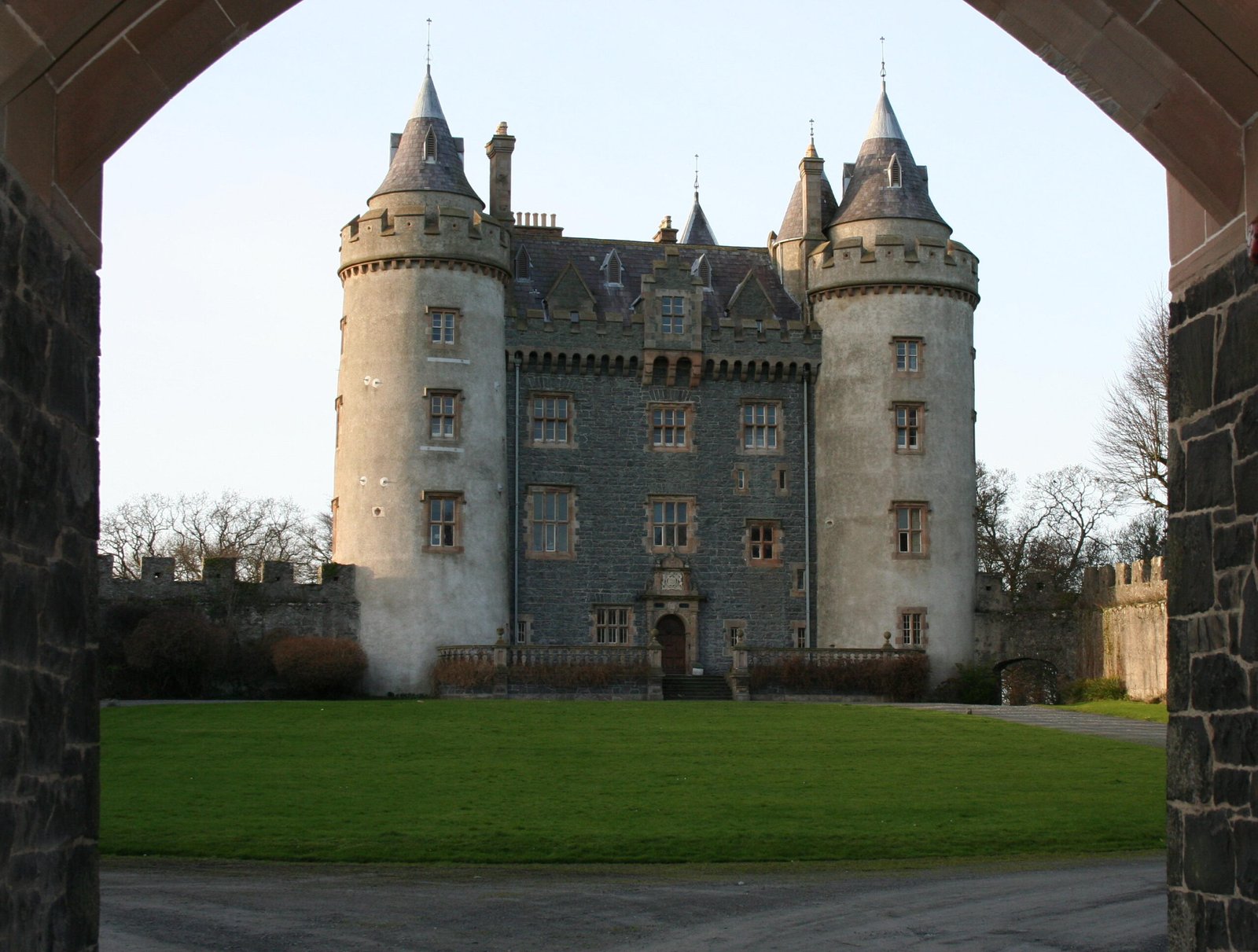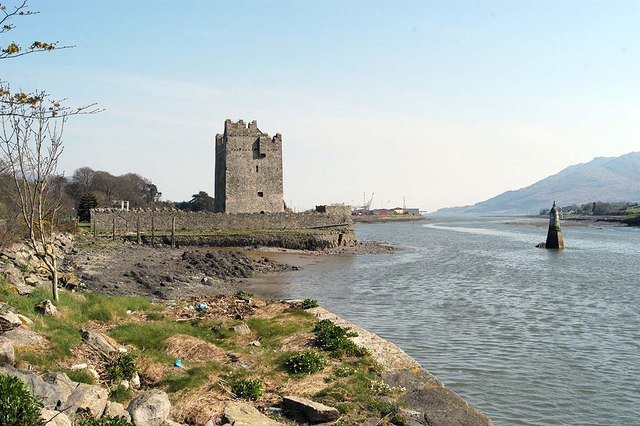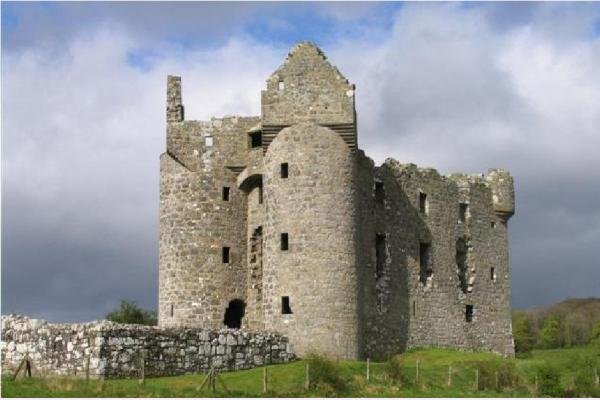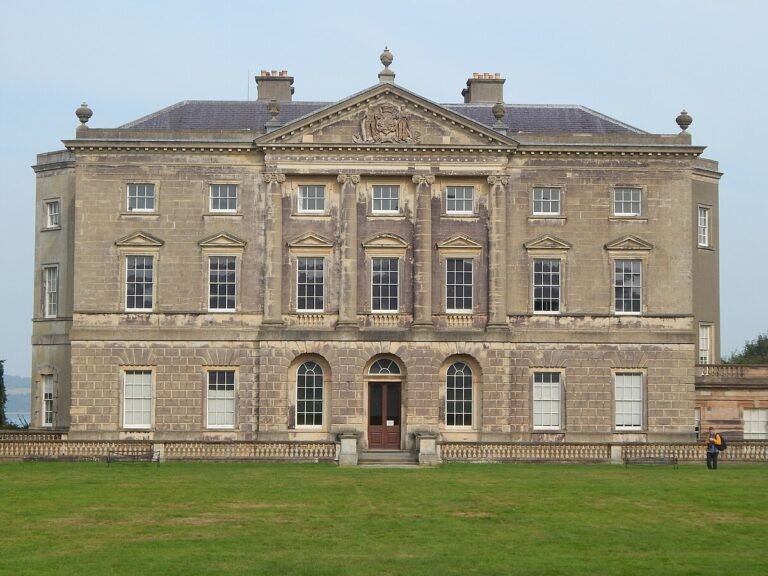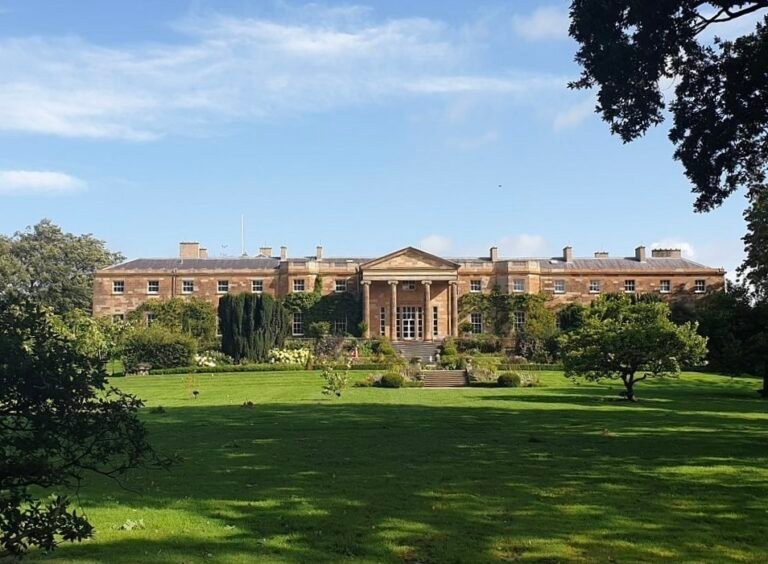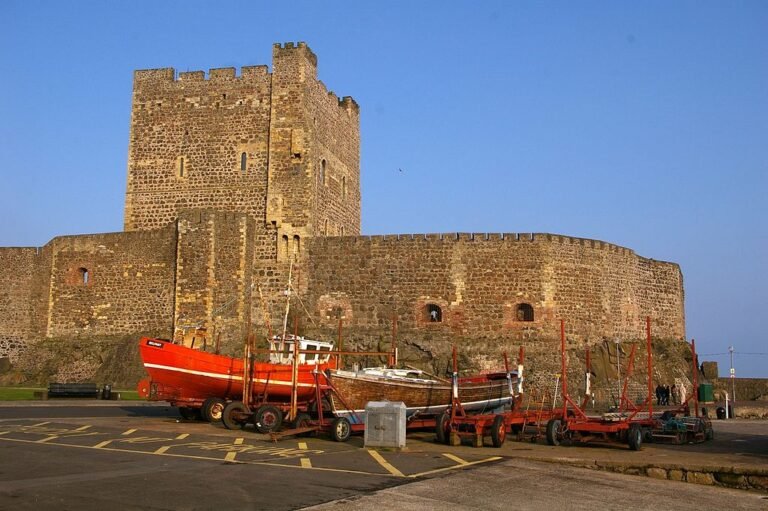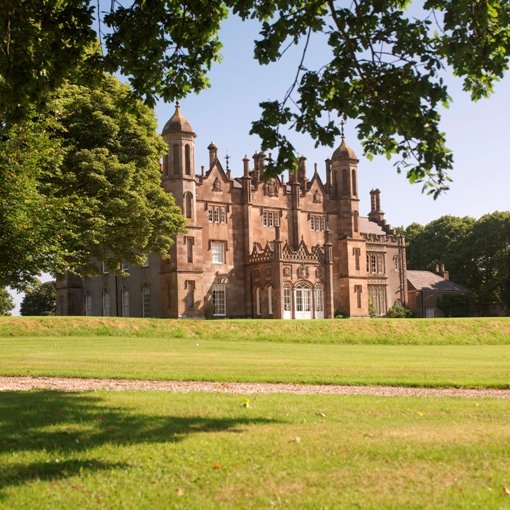Killyleagh Castle: Strangford Lough’s Storybook Stronghold
Killyleagh Castle is the sort of place that stops you in your tracks. Turrets and slate spires rise above a handsome village high street; sturdy bawn walls soften into gardens and trees; the whole ensemble perches on the western shore of Strangford Lough in County Down. For many visitors, it’s the oldest inhabited castle in Ireland, a lived‑in landmark that tempts a photo, a pause, and a plan for a longer wander around the lough.
This guide brings together everything you need to make the most of a visit: a short, digestible history; real‑world travel tips; the best places nearby; two ready‑to‑follow itineraries; and ideas for where to eat and stay. It’s written for families, couples and solo travellers, with UK English spelling and practical advice throughout.
Why Killyleagh Castle belongs on your Northern Ireland itinerary
Location: Killyleagh village, west shore of Strangford Lough, roughly half an hour to three‑quarters by road from Belfast, depending on traffic.
What you’ll see: A fairytale gatehouse on the village street, conical towers added in the 19th century, stretches of bawn wall, and pretty lanes that frame the castle from different angles.
Public access: It remains a private residence. That means no routine interior tours. You can admire the exterior from public streets and viewpoints, and occasionally there may be curated events or stays in associated self‑catering spaces.
Who it suits:
- Families who want gentle walking, a playground stop and picnic‑friendly parks.
- Couples after beautiful light, waterside dining and a relaxing weekend near Belfast.
- Solo travellers keen on heritage hopping, landscape photography and easy public transport.
Good to know: Treat it like a residential area first and a visitor sight second. Keep gateways clear, be considerate with drones, and follow local signage.
Killyleagh Castle: A short history
Killyleagh’s story stretches back to the late 12th century, when Anglo‑Norman power shifted into this corner of Down. A defensive site evolved into a residence; in the 17th century, it became associated with the Hamilton family, whose lineage is still tied to the castle today.
The 1600s were turbulent across Ulster. Fortifications were patched, breached and repaired, and Killyleagh’s gatehouse bears the echo of those decades. The overall silhouette most visitors recognise, though, is largely 19th‑century: the French‑inspired round towers and steep roofs that give it that “storybook” look were part of a mid‑Victorian makeover by the prolific architect Sir Charles Lanyon. The result is not a museum piece but a layered home, medieval core, early‑modern walls, and romantic revival on top.
Why it matters today is twofold. First, it’s a lived heritage site, offering a glimpse of continuity from the Middle Ages to now. Second, it anchors an easy loop of coastal villages, gardens and country parks around Strangford Lough – perfect for a short break.
Fast facts & figures (to plan quickly)
- Type: Inhabited castle with medieval origins and 19th‑century romantic turrets.
- Setting: Edge‑of‑village site overlooking drumlin country and the tidal waters of Strangford Lough.
- Photography: Best light early and late; the gatehouse view along the high street is the classic shot.
- Accessibility: Exterior viewing from pavements; nearby parks offer several step‑free paths. Always check local information on gradients and surfaces.
- Seasonality: Strangford Lough is lovely year‑round. Spring brings blossom and birdlife; summer has long evenings; autumn is golden; winter can be atmospheric with clear views and fewer crowds.
Getting to Killyleagh Castle
By car
From Belfast, the straightforward route runs via Comber and the A22. Journey time is typically 35–45 minutes in normal traffic; allow longer on sunny weekends and during events. Parking is on‑street around the village; please be considerate of residents and restrictions.
By public transport
Regular Translink buses link Belfast with Killyleagh via Comber and Downpatrick services. Journey times vary; build in a little buffer for connections and check timetables close to travel.
Cycling & walking
The land around Strangford Lough is classic drumlin country, rolling, green and photogenic. Competent cyclists will enjoy the quiet lanes that thread between bays and farms; carry lights and ride single‑file. On foot, short village loops and shoreline paths at nearby parks make gentle options.
When to visit & how long to allow
Quick stop (30–45 minutes): Park up, enjoy the signature gatehouse view, stroll a block or two for different angles, grab a coffee.
Half‑day (3–4 hours): Combine exterior viewing with a visit to Delamont Country Park for lough‑edge paths and picnic spots, or cross to Strangford and Portaferry for harbourside cafes.
Full day: Add one of the big‑ticket estates, Castle Ward or Mount Stewart, for house exteriors, gardens and miles of trails.
Top tip for photographers: aim for golden hour. The castle stone takes on gorgeous tones, and traffic is lighter for cleaner compositions along the street.
Seeing Killyleagh Castle respectfully
- Stick to public areas. Paths, pavements and village lanes give fine views.
- Drones: Follow UK/NI rules. Avoid overflying homes, gardens and roads; never fly over the private grounds.
- Tripods: Small travel tripods are fine on pavements; don’t block walkways.
- Early is easiest. Morning light and quiet streets make the best first impression.
What to pair with Killyleagh: the best nearby highlights
Delamont Country Park (5–10 minutes)
Gentle shoreline trails, a play park and sweeping views to the Mourne Mountains on clear days. Ideal for families and anyone who wants space to breathe.
Why go: Easy parking, picnic tables, and short circuits that suit mixed‑ability groups.
Castle Ward (Strangford)
An 18th‑century demesne with the famous split personality, Palladian on one front, Gothic on the other and miles of woodland and shoreline tracks. Its farmyard doubled as a TV filming location, which makes it a hit with teens and film buffs.
Why go: Big estate energy, bike‑friendly trails, cafe stops, and photo‑rich architecture.
Mount Stewart (Ards Peninsula side)
One of the most acclaimed gardens in the UK, temperate and imaginative, wrapped around a grand house. The drive up the peninsula pairs well with antique shops in Greyabbey and beaches beyond.
Why go: Garden lovers’ heaven; couples will linger.
Gibb’s Island & western shore reserves
Small wildlife‑rich spaces just south of Killyleagh, quiet, close‑to‑water walks with seasonal birds. Bring binoculars and keep dogs on leads where requested.
Downpatrick & the Saint Patrick story
A short hop away, Downpatrick layers early Christian heritage with a modern interpretive centre, cathedral, and walking tours that suit solo travellers and history‑minded families.
Practical tips for different travellers
Families
- Keep the castle stop short and sweet, then burn energy at Delamont’s play park and shore loop.
- Pack layers; coastal breezes can feel cool even on bright days.
- Consider a two‑base day: morning at Killyleagh/Delamont, afternoon at Castle Ward’s farmyard and cafe.
Couples
- Time your arrival for late afternoon, then drift into Strangford for seafood and a sunset stroll.
- Stay somewhere characterful, a coaching inn, harbour B&B or a countryside cottage with a stove.
- Build in a peninsula loop the next day: gardens at Mount Stewart, lunch in Greyabbey, and beach time.
Solo travellers
- Base in Downpatrick or Newtownards for wider bus links and easy day‑trips.
- Mix heritage with nature: castle exteriors, a museum stop, then long shore walks.
- Carry a small daypack with water, a compact brolly and a battery pack for maps/photos.
Accessibility & family‑friendliness
- Step‑free viewing: The classic gatehouse vista is from level pavement. Some village lanes undulate gently; take care with cambers.
- Toilets & facilities: Use village cafes/pubs or head to nearby parks and estates where facilities are clearly signposted.
- Buggies & wheelchairs: Delamont and the big estates signpost accessible routes, check onsite maps on arrival for the smoothest options.
Where to eat & drink (balanced picks)
Killyleagh village: Expect cosy cafes for brunch, bakeries for picnic supplies and pubs for an easy lunch. Menus lean to hearty classics, seafood specials when available, and good coffee. Weekends in summer can be busy – book tables if you can.
Strangford & Portaferry: A short drive brings you to twin harbours with traditional inns, bistros and waterside views. Great for a date‑night dinner or an unhurried Sunday lunch.
Coffee & treats: Independent roasters pop up across County Down; ask locals for a favourite flat white or traybake spot.
Where to stay near Killyleagh Castle
You won’t find a big resort scene here, and that’s a plus. Accommodation is human‑scale and character‑led.
- In‑village B&Bs and coaching inns: Atmospheric rooms beneath the turrets, perfect for strolling out at dawn or dusk for photos.
- Self‑catering cottages and harbourside apartments: Great for families and longer stays; look for parking, outdoor space and lough views.
- Country escapes around the lough: Farm stays and cottages on quiet lanes suit couples seeking privacy and starry nights.
- Across the water: Portaferry and Strangford add waterside inns and boutique B&Bs, handy for Castle Ward and the ferry.
Booking tip: Summer weekends and festival periods fill quickly. For the best availability, aim for shoulder seasons, April–June and September–October, when light is lovely and gardens glow.
Suggested itineraries & themed routes
Itinerary 1: One perfect day (family‑friendly focus)
09:00 – Castle first look
Start at Killyleagh’s gatehouse for the classic shot. Let kids count turrets and find carved details in the stone.
10:00 – Delamont Country Park
Pick a short shore loop (30–60 minutes). Snack stop at a viewpoint; if energy allows, add a second loop through meadows.
12:30 – Picnic or village lunch
Grab pies, sandwiches and fruit from local bakeries; if the weather turns, cafes offer shelter and hot chocolate.
14:00 – Castle Ward adventures
Drive to Strangford. Explore way‑marked trails (choose a 3–5 km loop) and the film‑famous farmyard. Optional bike hire in season.
17:00 – Strangford or Portaferry
Wind down with an early dinner and watch the ferry come and go before heading back.
Itinerary 2: A two‑day lough loop (for couples)
Day 1 – Killyleagh to Strangford
- Morning coffee and castle photos in soft light.
- Late morning bird‑watch at Gibb’s Island (bring binoculars).
- Afternoon strolls at Castle Ward; aim for golden hour by the shoreline.
- Dinner and overnight in Strangford.
Day 2 – Ards Peninsula & Mount Stewart
- Take the scenic drive up the lough’s eastern edge.
- Late morning at Mount Stewart’s gardens; lunch on‑site or in Greyabbey.
- Meander back via small beaches and antique shops, ending with a sunset detour to Killyleagh for a final turret‑top photo.
Itinerary 3: Castle‑collector circuit (solo or any)
- Morning: Killyleagh exterior walkabout and village lanes.
- Late morning: Hillsborough Castle and Gardens for a royal‑residence contrast (pre‑book timed entry in season).
- Afternoon: Carrickfergus Castle, a heavyweight medieval fortress on Belfast Lough, to round off a three‑castle day.
Distances are manageable with a car; by bus, focus on one estate plus Killyleagh and allow open time for connections.
Seasonal events & special experiences
- Spring (Mar–May): Gardens ignite; lambs dot the fields; migrant birds enliven the lough. Shoulder‑season calm makes this a sweet spot for photographers.
- Summer (Jun–Aug): Long evenings, village buzz and community festivals across Strangford Lough. Book accommodation and dining ahead.
- Autumn (Sep–Nov): Low sun, copper leaves and quieter paths; great for walkers and couples. Harvest menus appear in pubs and bistros.
- Winter (Dec–Feb): Short days but crisp views; pair the castle with cosy cafe stops and estate house illuminations where offered.
Sunrise & sunset moments: The turret line loves sidelight. Use a longer lens for compressed, dramatic angles; wide lenses catch the gatehouse framing the sky. Pack a microfibre cloth—the lough’s air can be salty.
Broader UK tie‑ins: building a bigger trip
Use Killyleagh Castle as a thematic anchor for a UK‑wide heritage jaunt.
- Castles & coastlines: Combine Killyleagh with Carrickfergus and Dunluce in Northern Ireland; hop to Northumberland for Bamburgh and Dunstanburgh; finish in Wales with Caernarfon or Conwy for textbook medieval might.
- Gardens & great houses: Pair Mount Stewart with Hillsborough, then cross to Cumbria or Yorkshire for stately homes and national‑park landscapes.
- Film & TV locations: From Castle Ward’s screen credits to Scotland’s Doune Castle and England’s Alnwick, it’s easy to stitch a cinematic route.
- Rail‑friendly weekends: Base in Belfast, use buses for Killyleagh and the estates, then take trains for onward UK city breaks.
Responsible visiting
- Respect privacy: Killyleagh Castle is a home. Keep noise low, avoid blocking driveways and follow any on‑site notices.
- Leave no trace: Take litter with you; stick to paths on nature reserves; keep dogs on leads where requested.
- Support local: Independent cafes, galleries and craft shops give the village its texture—your spend makes a difference.
FAQs – Killyleagh Castle
Is Killyleagh Castle open to the public?
No. Killyleagh Castle is a private family home. You can admire it from the village streets and the gatehouse, but there’s no routine public access. Occasional events happen, but they’re not regular.
Can I tour the inside?
Not ordinarily. There are no standard guided tours. If you see mentions of “by appointment” online, treat that as historic/one-off rather than a standing offer.
Who lives in Killyleagh Castle today?
The Hamilton family. The current resident named in public sources is Gawn Rowan Hamilton.
When was it built?
Parts of the site date back to around 1180. The castle’s present plan is largely 17th-century (reworked in 1666) with those fairy-tale turrets added in the mid-19th century.
Why does it look like a French château?
Because it was remodelled in the 1800s by architect Sir Charles Lanyon, whose work gave it that Loire-style silhouette.
Is it really the oldest inhabited castle in Ireland?
It’s widely described as one of the oldest continuously inhabited castles in Ireland. The claim appears often in tourism and media write-ups, but is best phrased as “believed to be one of the oldest.”
Can you stay at Killyleagh Castle?
Not in the main house, but yes — two self-catering towers in the defensive wall (often called Ava and Blackwood) can be rented as holiday lets. They’re typically booked directly via the owners rather than big OTAs. A commonly listed phone contact is +44 (0)28 4482 8261. Amenities have included access by arrangement to a tennis court and pool for guests.
Is Killyleagh Castle a wedding venue?
The castle itself isn’t marketed as a public wedding venue. Most couples use nearby venues in Killyleagh (e.g., Dufferin Hall at the Dufferin Coaching Inn) or country houses in the area.
Was Killyleagh Castle used in Game of Thrones?
No. Winterfell was filmed at Castle Ward on Strangford Lough. Killyleagh Castle did feature in the CBBC series Dani’s Castle (2012–2014).
Where exactly is it?
In the village of Killyleagh, County Down, on the western shores of Strangford Lough, about 40 minutes’ drive south of Belfast along the A22.
Best spots for photos if it’s private?
You’ll get strong front-on views from High Street and the square by the gatehouse. Please don’t go beyond signed private areas or block driveways — it’s a lived-in home.
Is there parking?
On-street village parking (check local restrictions). For longer stops, pair a visit with Delamont Country Park a couple of minutes away, which has car parks, trails and lough views.
Are drones allowed?
This is a private residence within a village. If you fly, you’re responsible for complying with UK drone rules and respecting privacy — practically, most visitors skip drones here.
Any family-friendly things to do nearby?
Yes: Delamont Country Park (play areas, trails) and the volunteer-run Sir Hans Sloane Centre (local history / museum) in the village.
Do the towers have modern facilities?
Expect self-catering accommodation (kitchens, modern bathrooms). Details can vary; because bookings tend to be direct, always confirm current facilities and house rules when you book.
Quick nearby list for itineraries
Castle Ward/Winterfell experiences; Delamont Country Park; Strangford village and ferry; Downpatrick (cathedral and St Patrick sites); coastal drives around Strangford Lough.
Final thoughts
Killyleagh Castle rewards slow‑looking and simple plans: a respectful stroll for photos, then a day that opens into shore paths, gardens and harbourside meals. Its layered history and lived‑in character give it charm; its position on Strangford Lough makes it the perfect launch point for a wider County Down (and UK) castle adventure. Come for the turrets, stay for the landscapes and leave with ideas for your next heritage‑rich weekend.
